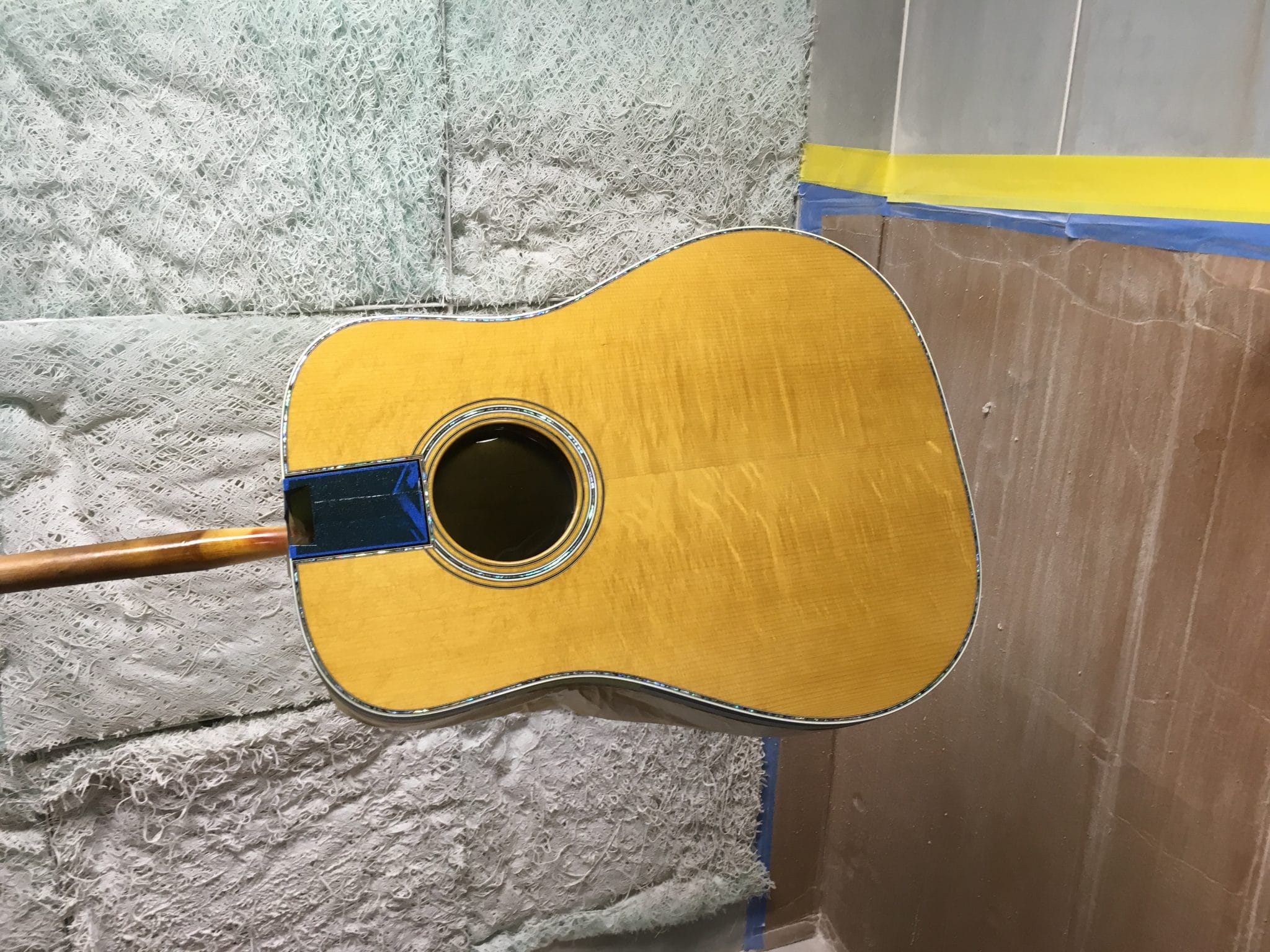About Nitrocellulose Finish
Nitrocellulose, the first man-made plastic, was created in 1862. It was composed of cellulose treated with nitric acid and a solvent. Celluloid was developed in 1869 by John Wesley Hyatt when he created a material called camphor nitrocellulose, the first thermoplastic. His invention was a contest entry to find a new material to make billiard balls that were originally made out of ivory.
In the early 1920’s nitrocellulose lacquer became the preferred finish on high-quality furniture and musical instruments. It is an exceptionally fast-drying solvent finish and a stronger version of the original shellacs and varnishes.
Nitrocellulose lacquer can be applied in multiple coats, but the resulting finish is still thin and protective. Because of its glass-like quality, it does a superb job of showing the beauty and grain of the wood. Also because it is such a thin finish it does not inhibit the natural sound of the guitar.
Compared to the more modern day polyester finishes it can be affected by solvents, alcohol, certain acids and other substances. Care should be taken to avoid prolonged exposure to any of these materials.
Nitrocellulose finish buffs to a high gloss and has a softer sheen, which may, in turn, show more wood grain compared to thicker poly finishes.
A brand new guitar with a nitrocellulose finish will be shiny and beautiful, but over time as the guitar is played the finish will begin to age – for example; swirl marks created by sitting the guitar on different surfaces or just holding it and playing it. If you are very particular about your finishes be aware that even shirt buttons and belt buckles will mark the finish. However, this creates the unique character of each individual guitar.
As it dries over time, a nitrocellulose finish creates a warm vintage patina, something you see in guitars from the Golden Era. Sometimes because of climatic changes, you will see small finish checks or alligatoring of the thin finish, but this does not affect the integrity of the guitar or the protective nature of the finish.
We also do our best to mitigate certain irregularities that resemble lines or sunken grain lines that are caused by the Nitrocellulose sinking in due to the larger wood pores on some wood sets, particularly Rosewoods. Rosewoods are also typically more oily and the lines of resin (hard sap) draw the lacquer into the grain lines, which is more likely to be seen as the guitar ages. These small Nitro sink lines are an outcome of using a thin solvent based traditional finish, which in part creates the signature sound of our guitars. Within the natural properties of each individual wood set, we strive for the best looking finish possible.
The best way to care for this finish is to clean your guitar with a damp warm soft rag and/or a very quality guitar polish that does not contain silicones.
At Thompson Guitars, we take pride in applying the highest quality finish to help set the stage for that vintage quality and tone. If you should have any questions or concerns about the nitrocellulose finish used on our guitars, please contact us at contact@pktguitars.com or 541-588-6211.

